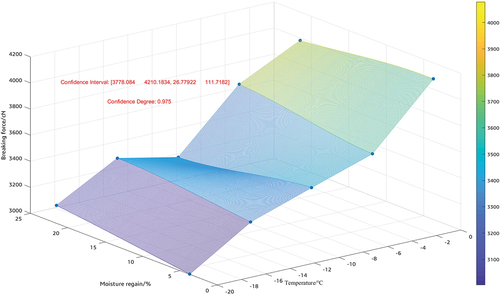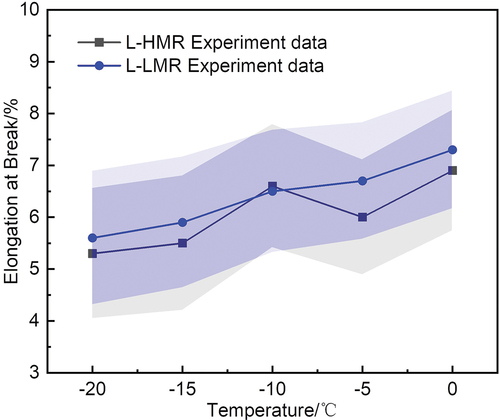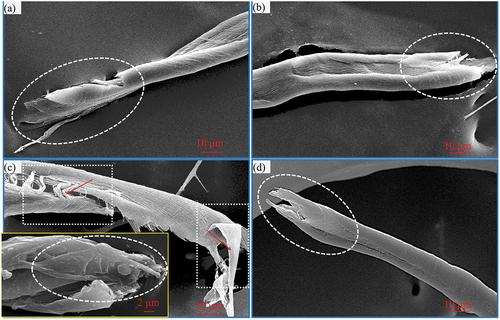Figures & data
Figure 1. Breaking force curve of cotton individual fiber and the illustration is fracture interface morphology.
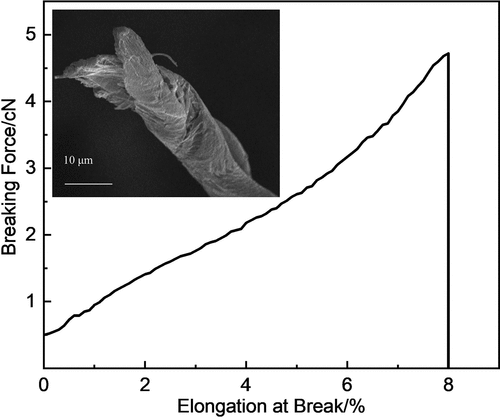
Table 1. Tensile mechanical properties result in normal machine-harvested cotton fibers.
Table 2. Tensile mechanical properties result in low temperature machine-harvested cotton fibers.
Figure 3. Fiber breaking force curve of machine-harvested cotton in low temperature environment. (a) L-HMR fiber experimental curve and fitting curve, (b) L-LMR fiber experimental curve, and fitting curve.
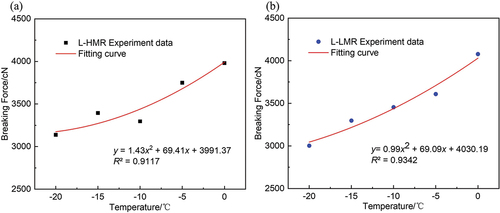
Table 3. MATLAB parameters and results.


